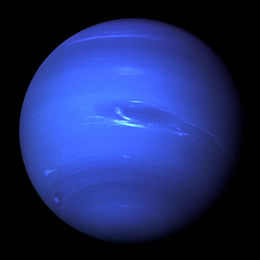
The Kepler/K2 Mission has revolutionized astronomy, having more than decupled the number of known and suspected exoplanets in just the last few years. Although we can extrapolate things we’ve learned from these distant planets to infer things about our own solar system, data from the mission have not impacted directly on our understanding of the solar system because the mission has not observed solar system objects, until now. For a recent paper, Jason Rowe and colleagues collected K2 observations of Neptune to look for the signatures of global oscillations in the planet.
What does that mean? All planets and stars exhibit intrinsic oscillations as seismic waves permeate their interiors – essentially they are ringing like giant celestial bells. On the Earth, detailed studies of these seismic waves have taught us loads about Earth’s interior, and the soon-to-launch Insight Mission will do much the same for Mars. We also study the Sun’s interior this way because we can watch as waves that originate deep within the Sun bounce around on the surface. For the Sun, these waves cause tiny oscillations in brightness every few minutes.
In the last decades, a lot of work has gone into looking for such oscillations for in gas and ice giants in our solar system, but aside from very cool indirect signatures in the rings of Saturn, no one has clearly detected global oscillations in the giant planets. Using the Kepler spacecraft, Rowe and colleagues set out to detect global oscillations by watching Neptune for 80 days. Unfortunately, in spite of a tremendous effort, they did not detect any clear oscillations from Neptune.
But amazingly, they were able to detect variations in brightness due to the Sun’s global oscillations. This is a little like seeing someone signaling with a flashlight by looking at a mirror in which the light is being reflected, only with the flashlight and mirror 4 billion kilometers apart.
The movie below shows the Kepler observations of Neptune as the planet meandered across the field of view. Keep in mind that the solar oscillations are VERY small, and the oscillations in brightness apparent in the movie are due to Neptune’s motion in the field, NOT due to the Sun. To see those oscillations, you’d need to be a computer.